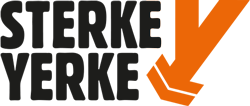In May 1978 the Sterke Yerke II participated in the HT sailing race “(Harlingen – Terschelling, v.v.)”.
During this HT race the idea was suggested to do something with the environment. It had to be something big, a trip across the ocean from one continent to another, but not just out of adventure, also with a purpose and that was there now. For that environmental project, Frits Riemersma, biology student, was asked to join as a researcher a month later.
Henk van Dam on the Sterke Yerke II
The photographer Henk van Dam from Leeuwarden, as admirer of the actions of the Sterke Yerke was also one of the twelve crew members during the HT race and made many photos.
These new plans led to the creation of the “Sterke Yerke Foundation” at the end of 1978. The big promoter of this was Henk van Dam and he was also appointed as chairman. Henk was, besides photographer, the great coordinator of everything that had to do with the Sterke Yerke. Without his enthusiasm, commitment and perseverance, the Sterke Yerke story might never have come to that. By means of a donation of 10,000 guilders from the “The National Association for the conservation of the Wadden Sea” the construction of the new raft could be started. That started in December 1978 on the factory grounds of Faber Haarden on the Tijnjedijk in Leeuwarden.
This was possible because Guus and Chris Schweigmann, two of the initiators, had good contacts in the Leeuwarder nightlife with friends of Gerrit Jan Faber, the then director of the Faber Haarden Factory. Chris Schweigmann also had a relationship with Lize Pepita Oosterloo from West-Terschelling at that time. She was the daughter of Cornelia Oosterloo-Faber, a sister of Gerrit Jan Faber.
For the construction of the raft they built a large tent in which all construction work took place during the cold winter months of 1978/1979. Faber Haarden offered the construction of the raft the factory facilities, such as transport and hoist installations, power, tools and welding equipment, available free of charge. For the buoyancy of the Yerke III, the choice was made for steel sand pipes with a diameter of 85 cm and a wall thickness of 4 mm on average. The pipes were welded together to form 5 floaters with a length of 10 to 12 meters. These five floaters next to each other had to provide buoyancy. The dimensions of the deck were 12 meters long and 5 meters wide.
The draft was approximately 0.5 meters. The deck consisted of 20 mm waterproof glued wooden lines. From the deck the underlying floaters could be reached via manholes and connecting pipes. The tubes were arranged in such a way that their stock, such as food, water, rigging, maps and medicines, could be stored.
There were also a few sleeping places. On the deck stood two wooden masts – the front with a height of 10 meters – together suitable for plusminus 150 m2 of sail. The rig was square rigged so that a razeil could be used on the ocean. The total weight of the Sterke Yerke was approx. 8.5 tonnes. On April 14, 1979, the raft at the foot of the Oldehove in the city canal of Leeuwarden was launched and baptized by Ingrid Nauta, the daughter of the sailor Dirk Nauta.
Immediately after the baptism, the Sterke Yerke started her maiden trip to Grouw.

